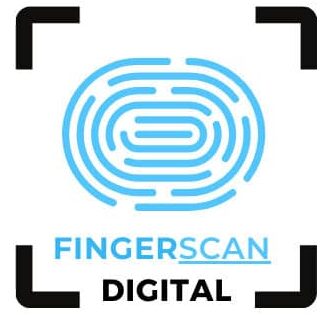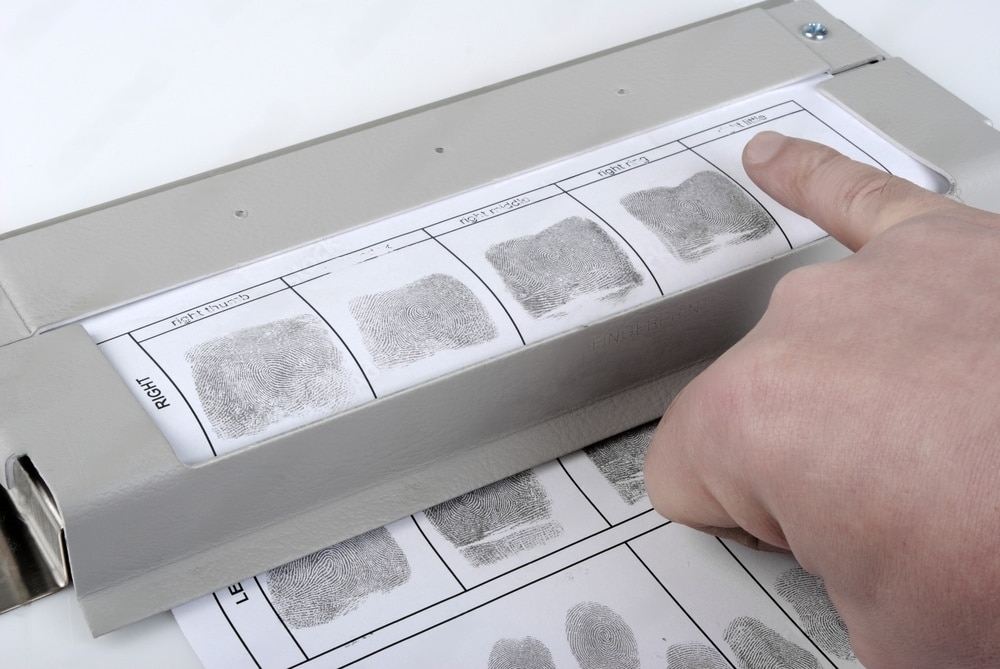Introduction
In a world driven by technology, it’s fascinating to take a step back and appreciate the methods that have stood the test of time. One such method is ink card fingerprinting. While digital alternatives like Live Scan have gained popularity, there’s a nostalgic charm to the traditional ink-and-paper technique that has served us well for decades. In this blog, we’ll dive into the world of ink card fingerprinting, its process, its significance, and the reasons why it continues to hold a special place in our hearts.
The Art of Capturing Identity
Ink card fingerprinting, also known as the “rolled ink” method, is a technique that has been a cornerstone of identification and law enforcement for generations. It’s a process that involves using ink and a special fingerprint card to capture the unique ridges and patterns on an individual’s fingertips. Despite the rise of digital technology, ink card fingerprinting remains a valuable tool for various reasons.
The Process Unveiled
The process of ink card fingerprinting is a blend of science and art. Here’s how it works:
- Preparation: The individual’s fingers are cleaned to remove any dirt or oil that might interfere with the quality of the fingerprint impressions.
- Ink Application: A trained technician carefully applies fingerprint ink to the individual’s fingertips. The person’s fingertips are then rolled onto the fingerprint card, leaving clear and distinct impressions of the unique ridge patterns.
- Card Completion: All ten fingers are sequentially rolled onto the card, ensuring that each impression is clear and legible. Additional personal information, such as the individual’s name and date of birth, may also be recorded on the card.
- Drying and Submission: Once the ink dries, the fingerprint card is ready for submission. It’s then used for various identification purposes, such as background checks, criminal records, and even immigration procedures.
The Significance of Tradition
In a world of ever-evolving technology, why does ink card fingerprinting still matter? There’s an undeniable charm to this classic technique that continues to resonate with us. Here are a few reasons why:
- Reliability: Ink card fingerprinting produces high-quality impressions that are accepted by agencies around the world. Its dependability has endured through the ages.
- Personal Connection: The tactile nature of ink card fingerprinting creates a personal connection between the individual and the identification process. It’s a physical interaction that feels significant.
- Timelessness: Ink card fingerprinting carries a sense of tradition and history, reminding us of the long-standing methods that have helped keep our communities safe.
- Accessibility: Unlike digital methods that require specialized equipment, ink card fingerprinting can be conducted with minimal resources, making it accessible to a wide range of organizations.
Embracing the Past and the Future
While ink card fingerprinting remains relevant, it’s important to acknowledge the advantages of modern technology. Digital methods like Live Scan offer speed, efficiency, and secure data transmission. However, the beauty of choice lies in our ability to embrace the best of both worlds.
In conclusion, ink card fingerprinting is more than just a method—it’s a testament to the enduring power of tradition. It’s a reminder that sometimes, the old ways can still bring a smile to our faces and serve us well in a world that’s always changing.
So, the next time you come across an ink card fingerprinting kit, take a moment to appreciate the legacy it carries and the stories it holds within its ink-stained patterns. It’s a bridge that connects our past to our future, one fingerprint at a time.
Preserving the Craft for Generations
As we continue to march forward in the digital age, it’s heartening to see that ink card fingerprinting hasn’t been forgotten. Many law enforcement agencies, historical societies, and enthusiasts are dedicated to preserving this timeless technique. Workshops, training sessions, and even fingerprinting events keep the art of ink card fingerprinting alive, ensuring that future generations can appreciate its significance.
Capturing the Essence of Identity
There’s an artistry to ink card fingerprinting that goes beyond its functional purpose. Each fingerprint captured on paper tells a story—a story of an individual’s unique identity, their experiences, and their place in the world. These patterns are like nature’s signatures, and ink card fingerprinting allows us to capture and celebrate these signatures in a tangible and lasting way.
A Journey of Reflection
Using ink card fingerprinting is more than just a process; it’s a journey—a journey that allows individuals to reflect on their identity and their role in society. It prompts us to think about our own uniqueness, as well as the shared bonds that connect us all. In a time when digital interactions dominate, this hands-on process brings a sense of connection to ourselves and our surroundings.
A Bridge to the Future
While ink card fingerprinting has an undeniable charm, it’s essential to recognize that technology has advanced for good reasons. Digital methods offer efficiency, accuracy, and the ability to store and transmit data securely. As we celebrate the legacy of ink card fingerprinting, we can also look forward to a future where technology and tradition coexist harmoniously.
Embracing the Best of Both Worlds
Ultimately, whether it’s the fingerprint on an ink card or a digital scan, the goal remains the same: to accurately identify individuals and ensure safety and security. The beauty lies in the choice we have—the choice to embrace the best of both worlds and to appreciate the diversity of methods that contribute to our understanding of identity.
In closing, ink card fingerprinting is a testament to the enduring power of tradition and human ingenuity. It bridges generations, creates connections, and leaves an indelible mark on our collective memory. So, as we celebrate the digital age, let’s not forget to cherish the methods that have brought us this far. Let’s appreciate the ink-stained pages that tell stories of identity, resilience, and the human spirit.
FAQs about Ink Card Fingerprinting
1. What is ink card fingerprinting? Ink card fingerprinting, also known as “rolled ink” fingerprinting, is a traditional method of capturing an individual’s fingerprint impressions using ink and a special fingerprint card. It’s a physical process that has been used for identification and law enforcement purposes for many years.
2. How does ink card fingerprinting work? In ink card fingerprinting, a person’s fingers are inked, and then rolled onto a fingerprint card, leaving behind clear and detailed impressions of their unique ridge patterns. This method creates a tangible record of an individual’s fingerprints.
3. Is ink card fingerprinting still relevant today? Yes, ink card fingerprinting remains relevant for certain applications. While digital methods like Live Scan have gained prominence, ink card fingerprinting is valued for its reliability, simplicity, and the personal connection it provides.
4. What are the benefits of ink card fingerprinting? Ink card fingerprinting offers several benefits, including:
- Reliability: Produces high-quality impressions accepted by various agencies.
- Personal connection: Involves a tactile interaction, creating a sense of involvement.
- Accessibility: Requires minimal resources and equipment.
5. Where is ink card fingerprinting used? Ink card fingerprinting is used in various fields, including law enforcement, criminal background checks, historical preservation, and even art projects that involve fingerprint-based artworks.
6. How accurate is ink card fingerprinting compared to digital methods? Ink card fingerprinting can produce high-quality impressions, but digital methods like Live Scan offer higher accuracy due to the ability to analyze and digitally enhance captured images.
7. Are there any disadvantages to ink card fingerprinting? While ink card fingerprinting has its merits, it can be more time-consuming compared to digital methods. It also requires skilled technicians to ensure clear and accurate impressions.
8. Is ink card fingerprinting accepted for legal and official purposes? Yes, ink card fingerprinting is accepted for various official purposes, including criminal background checks, employment screenings, and some legal proceedings. However, the acceptance may vary based on jurisdiction and specific requirements.
9. Can I do ink card fingerprinting at home? While ink card fingerprinting can be done at home, it’s recommended to have it done by trained professionals to ensure accurate impressions that meet the standards required by various agencies.
10. Can ink card fingerprinting be used for modern identification needs? While ink card fingerprinting is a traditional method, it might not be suitable for certain modern identification needs that require rapid processing and digital record-keeping. In such cases, digital methods like Live Scan are more practical.
11. How can I learn more about ink card fingerprinting? You can explore local law enforcement agencies, historical societies, or community organizations that might offer workshops or events related to ink card fingerprinting. Additionally, online resources and tutorials can provide insights into the technique.
12. Can ink card fingerprinting be digitized later? Yes, ink card fingerprint impressions can be digitized through scanning or photography for archival or comparison purposes, allowing for integration with digital databases.
13. Is ink card fingerprinting more secure than digital methods? Both ink card fingerprinting and digital methods have their security measures. Digital methods offer secure data transmission, while ink card fingerprinting’s physical nature might be considered more difficult to tamper with.
14. Are there any privacy concerns related to ink card fingerprinting? Like any method involving personal data, there are privacy concerns associated with ink card fingerprinting. Proper handling, storage, and disposal of fingerprint cards are essential to mitigate these concerns.
15. Can I choose between ink card fingerprinting and digital methods? In many cases, you might not have the choice, as the method used could depend on the requirements of the agency or organization requesting the fingerprints. However, some places might offer options based on specific circumstances.
Remember that while ink card fingerprinting has its place, it’s important to consider the requirements of your specific situation and the available methods to ensure accurate and compliant results.
Preserving Legacy, Embracing Progress: A Harmonious Blend
Ink card fingerprinting and modern digital methods each bring something unique to the table, and the future lies in finding a harmonious blend between the two. As we appreciate the beauty of ink card fingerprinting, let’s also acknowledge the incredible strides that technology has made in identification and security.
In an ever-changing world, we have the privilege of choosing the best tools for the task at hand. Digital methods offer speed, efficiency, and advanced analysis capabilities that are essential in today’s fast-paced environments. They enable us to swiftly process massive amounts of data, which is crucial for agencies and organizations tasked with safeguarding our communities.
Yet, there’s a profound appreciation for the traditional, for the tactile. Ink card fingerprinting reminds us of the human touch, the intimacy of physically interacting with the medium. It’s a connection to a time when every imprint was a story waiting to be told. As we celebrate the past, let’s also embrace the future with open arms.
So, whether it’s an ink-stained fingerprint card or a digital image on a screen, let’s honor both methods for their contributions to our understanding of identity and security. Let’s recognize that the art of ink card fingerprinting will forever hold a place in our hearts, while digital advancements propel us toward new horizons.
As we journey forward, let’s remember that the past enriches the present, and the present paves the way for the future. Our ability to embrace both tradition and progress defines our capacity to innovate while treasuring our roots. Ink card fingerprinting and digital methods, when woven together, create a tapestry that speaks to our ever-evolving quest for knowledge, connection, and a safer world for all. Learn more about Ink card fingerprinting
Expoler our anoter blogs here





